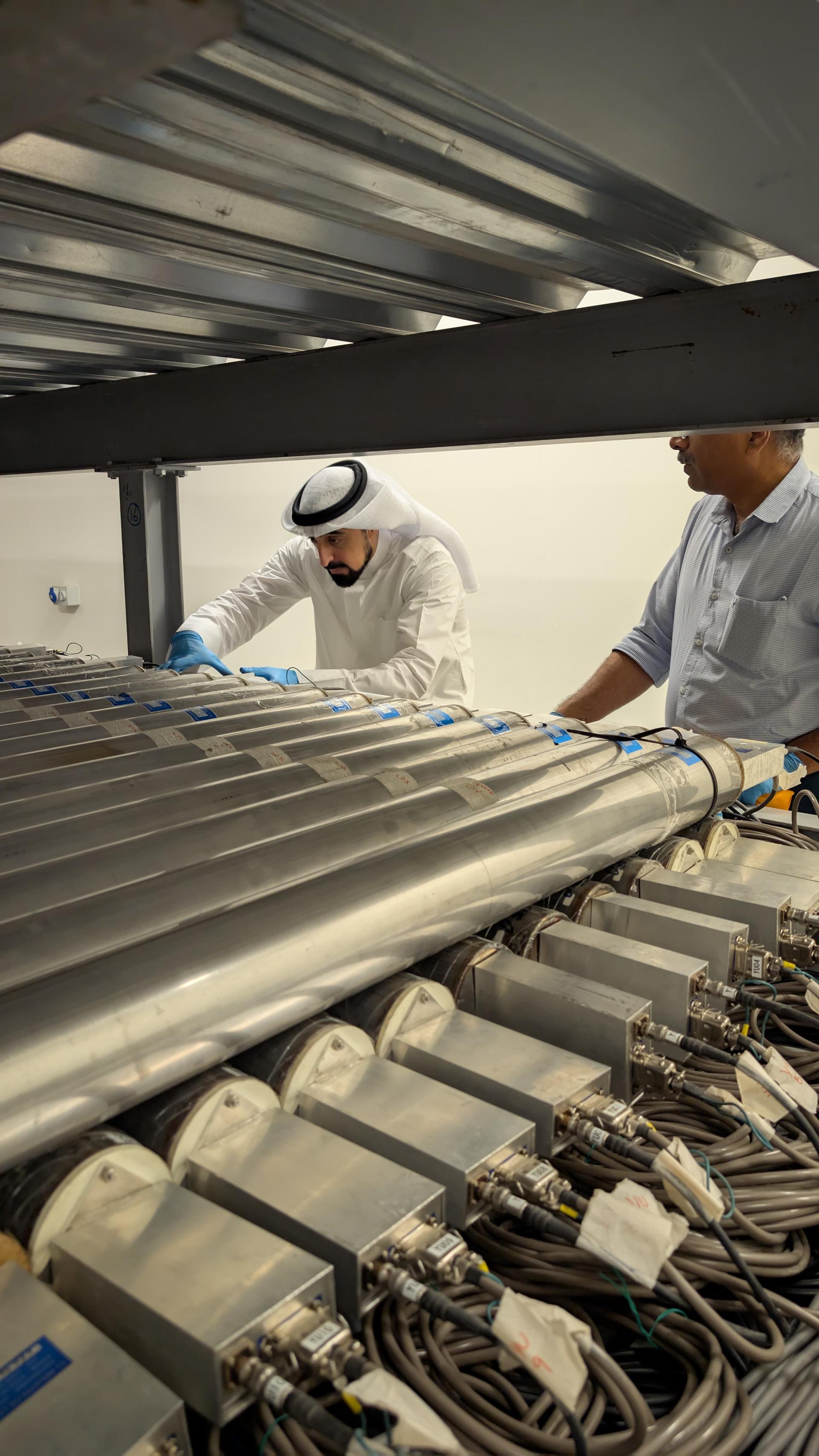
Amid increasing media reports warning about the effects of space weather on our daily lives, the team at the Kuwaiti Muon Observatory in the Physics Department of the College of Science emphasizes that these phenomena are a natural part of the solar system. The team provides a simplified scientific explanation of space weather and highlights the role of the Kuwaiti observatory in monitoring these phenomena and predicting their impacts.
Just as Earth's weather features seasonal variations, space weather refers to the changes occurring in outer space surrounding Earth due to solar activity. The Sun undergoes a roughly 11-year cycle, reaching a peak in its magnetic activity. During this solar maximum, there is an increased occurrence of sunspots, solar flares, and solar storms, along with a higher likelihood of high-speed charged particles being emitted from the Sun. When these particles reach Earth, they can impact the magnetic field that protects our planet, leading to temporary disturbances in Earth's magnetic field.
The solar storms affect technological systems on Earth, such as satellites, communication systems, power stations, and GPS devices. Although these effects are rare, they can cause temporary disruptions, prompting scientists to focus on predicting these storms and taking necessary precautions. For example, the Kuwaiti satellite team—KuwaitSat 1—continuously monitors space weather and implements measures to safeguard the satellite's systems in the event of solar storms.
To contribute to monitoring space weather, the Kuwaiti Muon Observatory was established in 2006 as part of the Global Muon Detection Network (GMDN), funded by Shinshu University in Japan. This network includes similar observatories in Japan, Australia, and Brazil to cover a significant portion of the Earth. Notably, the Kuwaiti Muon Observatory is the largest in the network and is dedicated to detecting Muons—particles generated from cosmic ray collisions with Earth's atmosphere.
In the event of a solar storm, these storms influence the intensity of cosmic rays, which affect the number of muons reaching Earth's surface. When the Kuwaiti Muon Observatory detects such changes, the data is analyzed within the global network, allowing for the issuance of warnings about major solar storms several hours before they reach Earth. This is because changes in muon levels precede the arrival of solar storms, giving governments and companies sufficient time to take necessary precautions.
The Muon Observatory team recognizes that some media reports may exaggerate the effects of space weather, especially with the Sun entering a solar maximum. However, space weather is not a threat to humanity; rather, it is a natural phenomenon that occurs regularly. The Sun last reached its peak activity in 2014.
The Muon Observatory team in the Physics Department at Kuwait University emphasizes the importance of understanding space weather as a recurring natural phenomenon, noting that scientific efforts and international cooperation ensure accurate monitoring and prediction of such phenomena.



 Colored
Colored Grayscale
Grayscale

